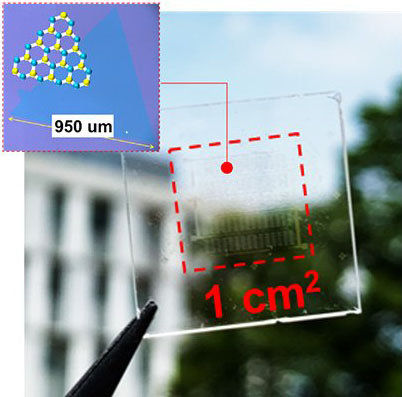| Jul 19, 2022 |
Highly transparent solar cell fabricated with 2D atomic sheet
(Nanowerk News) Solar panels often get a bad rap for spoiling the appearance of homes and businesses. Yet, this may be about to change.
|
|
A research group has fabricated a highly transparent solar cell with a 2D atomic sheet (Scientific Reports, "Fabrication of near-invisible solar cell with monolayer WS2"). These near-invisible solar cells achieved an average visible transparency of 79%, meaning they can, in theory, be placed everywhere - building windows, the front panel of cars, and even human skin.
|
|
Scientists have long sought to develop transparent solar cells, but the suitable materials have not existed thus far.
|
 |
| An optical image of a highly-transparent solar cell fabricated with a 2D atomic sheet. (Image: Toshiaki Kato)
|
|
To make the solar cell, the team controlled the contact barriers between indium tin oxide (ITO), one of the most widely used transparent conducting oxides, and a monolayer tungsten disulfide. They coated various thin metals onto the ITO and inserted a thin layer of Tungsten Oxide between the coated ITO and the tungsten disulfide.
|
|
"The way in which we formed the solar cell resulted in a power conversion efficiency over 1000 times that of a device using a normal ITO electrode," pointed out Toshiaki Kato, corresponding author of the paper and associate professor at Tohoku University's Graduate School of Engineering.
|
|
The group's efforts did not stop there. They also explored how their solar cell can be expanded for use in an actual solar panel.
|
|
"We discovered the appropriate design modifications needed to avoid an unexpected voltage drop that accompanies increasing the device area," said Kato.
|

